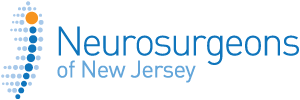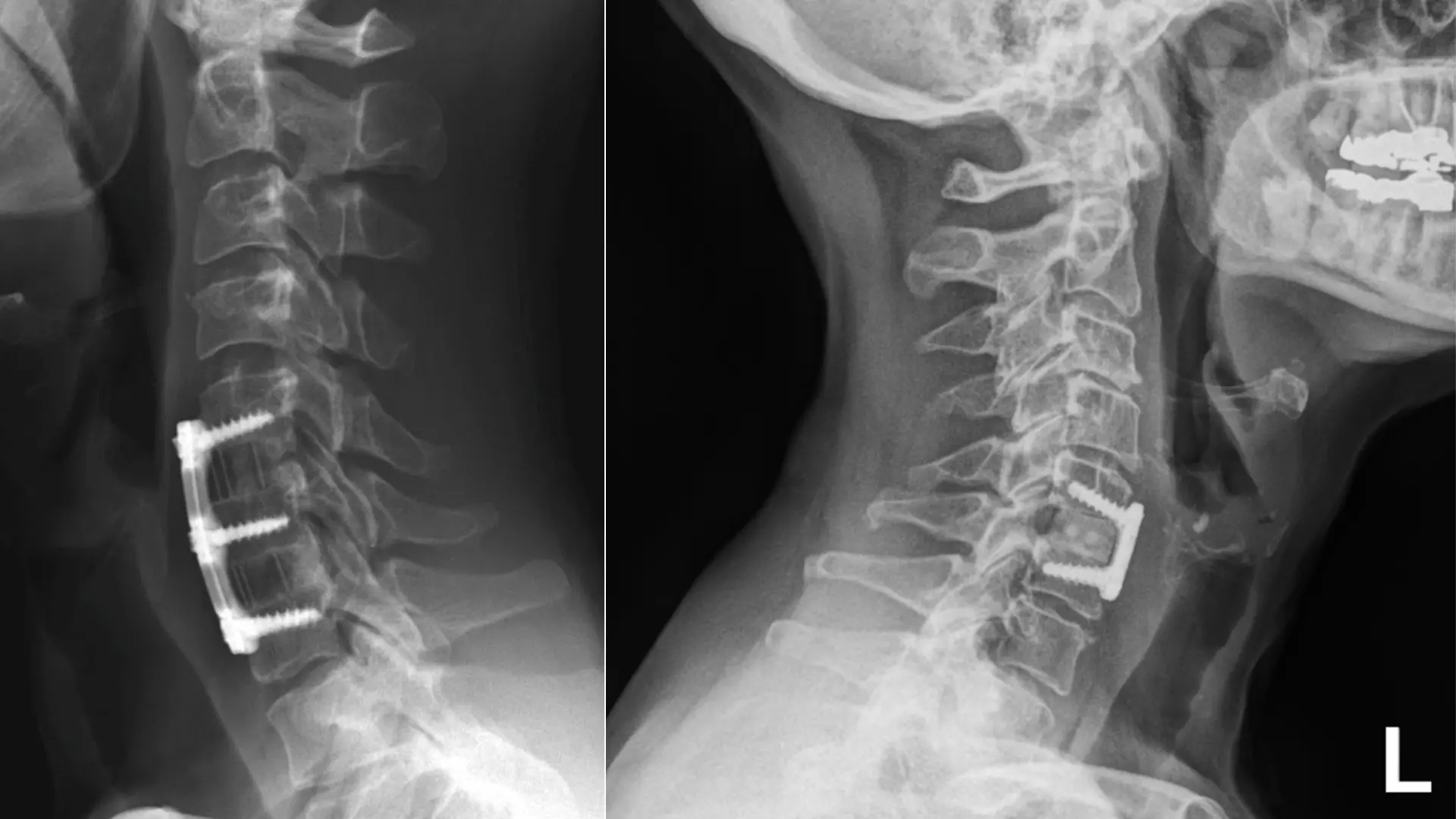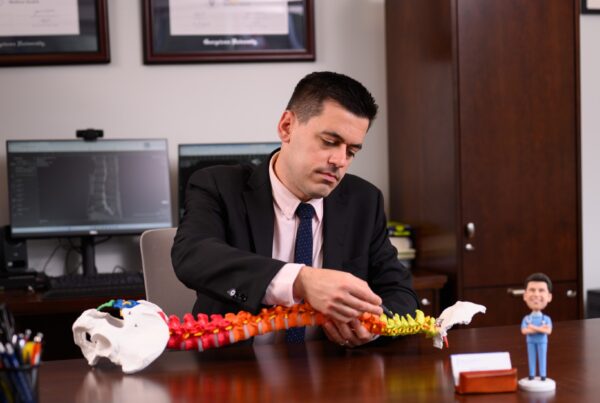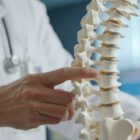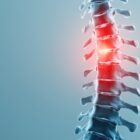Anterior cervical discectomy and fusion (ACDF) is a surgical procedure aimed at alleviating spinal cord and nerve compression and/or neck pain caused by problems in the cervical spine. This procedure is typically recommended when conservative treatments fail to relieve pain stemming from a damaged disc. In this blog post, we will explore the intricacies of anterior cervical discectomy and fusion (ACDF), the recovery process, and the benefits of the surgery.
What is Anterior Cervical Discectomy and Fusion?
Anterior Cervical Discectomy
Anterior cervical discectomy is a surgical procedure that involves removing a damaged disc from the cervical spine. The term “anterior” refers to the front of the neck, where the incision is made. This approach allows spine surgeons to access the cervical discs without disturbing the spinal cord and nerve roots that lie behind them.
The Fusion Process
After the discectomy, the surgeon performs a spinal fusion. This involves placing a bone graft in the empty disc space and securing the spine with a metal plate and screws to increase the chance that the bones grow together, forming a fusion. This process stabilizes the spine and prevents further movement that could cause pain. The bone graft can be sourced from the patient’s own body, a donor, or be a synthetic substitute.
Why Undergo Anterior Cervical Discectomy and Fusion (ACDF)?
ACDF is often recommended for individuals experiencing severe neck pain, numbness, or weakness in the arms caused by pressure on the nerves or spinal cord. These symptoms are typically due to a herniated or degenerative disc. By removing the damaged disc and stabilizing the spine, ACDF can provide significant relief from these symptoms.
ACDF for Specific Cervical Levels
The cervical spine is made up of seven vertebrae labeled C1 through C7, starting at the top of the spinal column and working down to the seventh vertebrae. ACDF surgery will address two or more of these vertebrae. For example, if you see “C5-C6 ACDF” it means the surgeon is fusing the fifth and sixth vertebrae of your neck.
The length of your recovery from anterior cervical discectomy and fusion will vary based on your individual health and age, as well as which cervical levels treated.
For example, the recovery process for a C5-C6 ACDF or C3-4 ACDF surgery may be shorter than for a C3-6 ACDF surgery. That’s because the C3-6 procedure involves four vertebrae.
Here’s a closer look at two common ACDF surgeries for specific levels:
C5-C6 ACDF Surgery
The C5-C6 level is a common site for ACDF surgery due to its susceptibility to degenerative disc issues and herniation. C5-C6 ACDF surgery can help alleviate symptoms associated with spinal cord and nerve root compression.
Symptoms affecting the nerves at the C5-C6 disc may include pain, tingling, or numbness that radiates down the arm toward your thumb and weakness of the biceps (the muscle that flexes your elbow).
A C5-C6 ACDF procedure aims to decompress the affected nerve roots and provide you with lasting pain relief and possibly reverse neurological deficits.
C6-C7 ACDF Surgery
A C6-C7 anterior cervical discectomy and fusion involves the lower vertebrae of the cervical spine.
Your surgeon may recommend a C6-C7 ACDF surgery if you have symptoms due to irritation of the nerves between these vertebrae. Symptoms may include pain throughout your arm, numbness or tingling radiating along the back of the arm into the middle fingers, and triceps weakness (the muscle that extends the elbow or works to perform a push-up).
Multi-Level ACDF Surgeries (e.g., C5-C7 ACDF)
A multi-level ACDF involves removal of more than one discs with fusing of at least 3 vertebrae.
Your surgeon may recommend a multi-level ACDF if you have symptoms produced by more than one degenerated disc. Symptoms result from irritation of more than one nerve or the spinal cord. A multi-level ACDF is a longer surgery and typically involves a longer recovery with possibility of using an external brace. As a result of fusing more or your spine, there is greater reduction of neck movement.
The name of the procedure indicates how many discs are removed and how many vertebrae are fused. For example, a C4-C6 ACDF means that the C4, C6, and C6 vertebrae are fused together. A C5-C7 anterior cervical discectomy and fusion also involves three vertebrae, but the C5, C6, and C7 vertebrae.
One of the biggest concerns associated with multi-level surgery is an increased risk of failed fusion since the bone has to heal across a greater surface area. Depending on what parts of the spine are fused, adjacent segment degeneration, when the disc above or below a fusion site degenerates, may also be a concern.
Benefits of ACDF Surgery
- Relief From Pain: The primary benefit of ACDF surgery is the relief of symptoms from nerve irritation that can include pain, numbness, or weakness.
- Stability: The fusion process stabilizes the cervical spine which may also decrease pain.
- Improved Quality of Life: As a result of the reduced nerve irritation,many patients report a significant improvement in their quality of life after the surgery.
It's time to get back
to doing what you love.
Preparing for ACDF Surgery
Pre-Surgery Assessments
Before undergoing ACDF surgery, patients will undergo an evaluation including a history, neurological exam, and imaging tests like X-rays and MRIs, to determine the extent of the disc damage and amount of nerve compression. This helps the surgeon create a surgical plan specific to the individual patient.
Lifestyle Adjustments
Patients are often advised to make certain lifestyle adjustments before surgery. This may include quitting smoking, as it can impede the healing process, and making dietary changes to promote overall health and recovery.
Anterior Cervical Discectomy and Fusion Recovery
Immediate Post-Surgery
Recovery from anterior cervical discectomy and fusion varies from person to person. The procedure is often performed as an outpatient when involving one or two discs. For more extensive procedures, the patients typically stay in the hospital for one to two days. During this time, they are monitored for any complications and address any post-surgical pain.
Weeks After Surgery
In the weeks after surgery, patients can resume many of their normal activities. A neck brace may be used to support the healing process. It’s essential to follow the surgeon’s instructions during this period to ensure proper healing. Physical therapy often begins a few months after surgery to help improve function and strengthen the neck.
Long-Term Recovery
Complete recovery from ACDF can take several months to a year. Depending on the degree of neurological compromise prior to surgery, patients are usually able to return to full activities, including sports, several months after surgery. Regular follow-up appointments with the surgeon are crucial to monitor the progress of the spinal fusion.
Post-Surgery Care and Physical Therapy
Importance of Physical Therapy
Physical therapy plays a crucial role in the recovery process after ACDF surgery. It helps patients regain lost neurological function and improve strength and flexibility in the neck. A tailored physical therapy program can address specific needs and help prevent future issues with the cervical spine.
Long-Term Management
Even after recovering from ACDF surgery, it’s important to maintain a healthy lifestyle to support spinal health. This includes regular exercise, maintaining a healthy weight, and practicing good posture. Regular check-ups with the spine surgeon are also important to ensure the continued health of the cervical spine.
Risks and Considerations
Like any surgical procedure, anterior cervical discectomy and fusion (ACDF) comes with potential risks. While ACDF is generally safe and has a high success rate when performed by experienced spine surgeons, it’s important to be aware of possible complications:
- Infection: A rare but potential risk.
- Bleeding: Minor blood loss is typical, but excessive bleeding may require additional intervention.
- Nerve or Spinal Cord Injury: Although rare, there is a slight risk of injury to the nerves or spinal cord during the procedure.
- Difficulty Swallowing (Dysphagia): Temporary swallowing discomfort is common after ACDF, particularly for multi-level surgeries. This will usually resolve after a couple of weeks without treatment.
- Failed Bone Fusion: In some cases, the bone graft may not fuse properly, which could necessitate revision surgery.
- Adjacent Segment Degeneration (ASD): Over time, stress on the levels above or below the fusion site can lead to additional disc degeneration.
It’s important to discuss these risks with your surgeon during your pre-operative consultation. With proper surgical planning and post-operative care, most patients experience significant symptom relief and avoid complications.
At Neurosurgeons of New Jersey, we are dedicated to providing world-class care tailored to each patient’s unique needs. Recognized as the #1 Surgical Practice in New Jersey for Neurosurgery, our team of highly skilled, award-winning surgeons combines advanced expertise with compassionate care. With 11 conveniently located offices across the state, we make top-tier neurosurgical treatment accessible to patients from all walks of life.
From diagnosis to recovery, we prioritize patient-centered care, using the latest surgical techniques and technologies to achieve the best possible outcomes. Our commitment to excellence, innovation, and personalized treatment ensures you’re in the best hands.
Take the first step toward relief today. Contact Neurosurgeons of New Jersey to schedule your consultation and learn how we can help you regain your quality of life.
Dr. Michael G. Kaiser, MD, FACS, FAANS
Dr. William S. Cobb, MD, PHD, FAANS
Dr. Gaetan Moise, MD, FAANS
Dr. Alfred T. Ogden, MD, FAANS
Dr. Jonathan Yun, MD, FAANS

About Ridgewood
Our team of board certified physicians, located in Ridgewood, New Jersey, are dedicated to bringing you the latest developments and treatment options for spinal surgery. We strive to produce the most clarified & clear content to help you make informed decisions on your medical journey. The road to feeling like your true self should not feel lonely- Let us help you. Please call us to schedule a consultation and speak to one of our team members.
